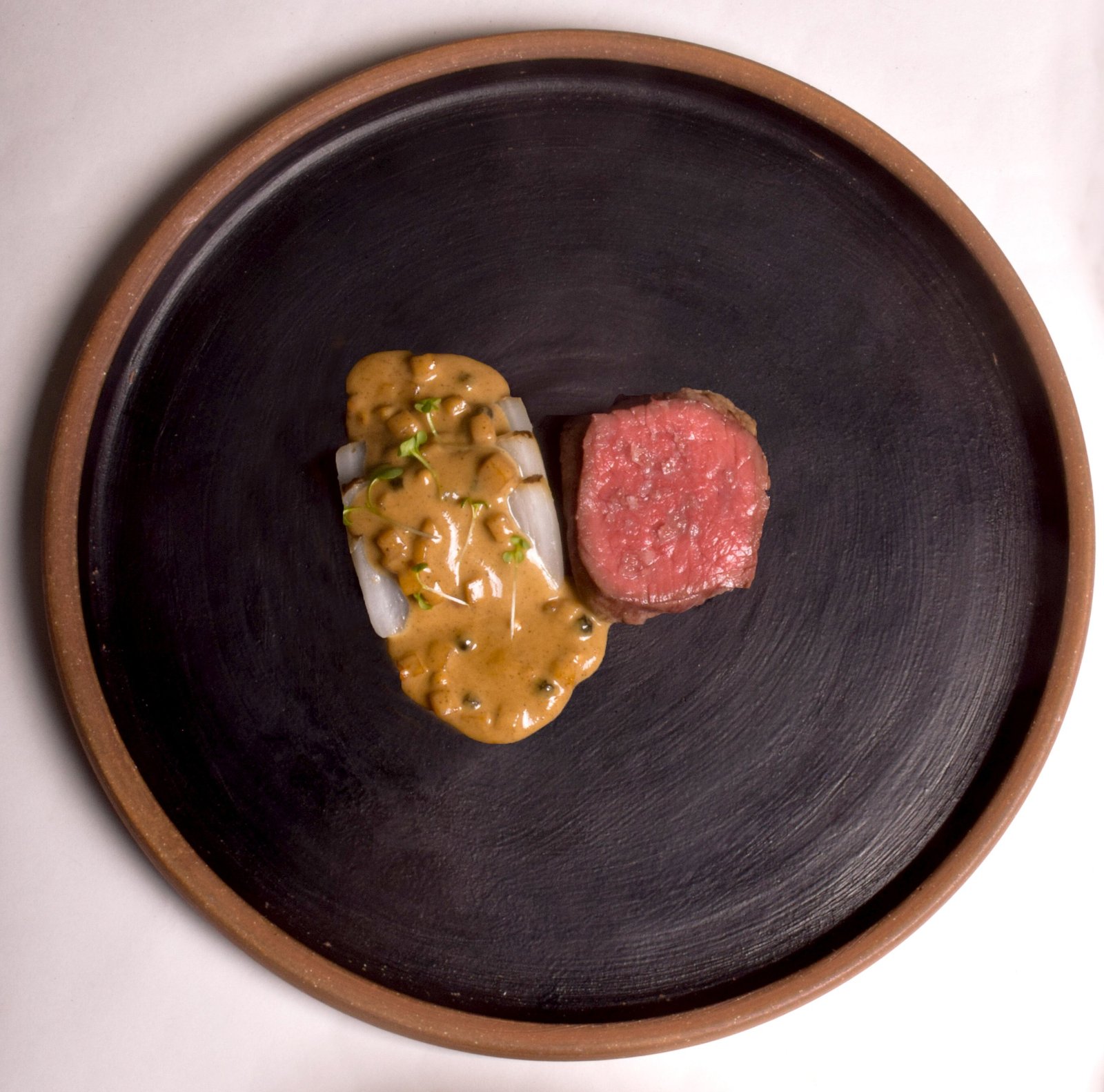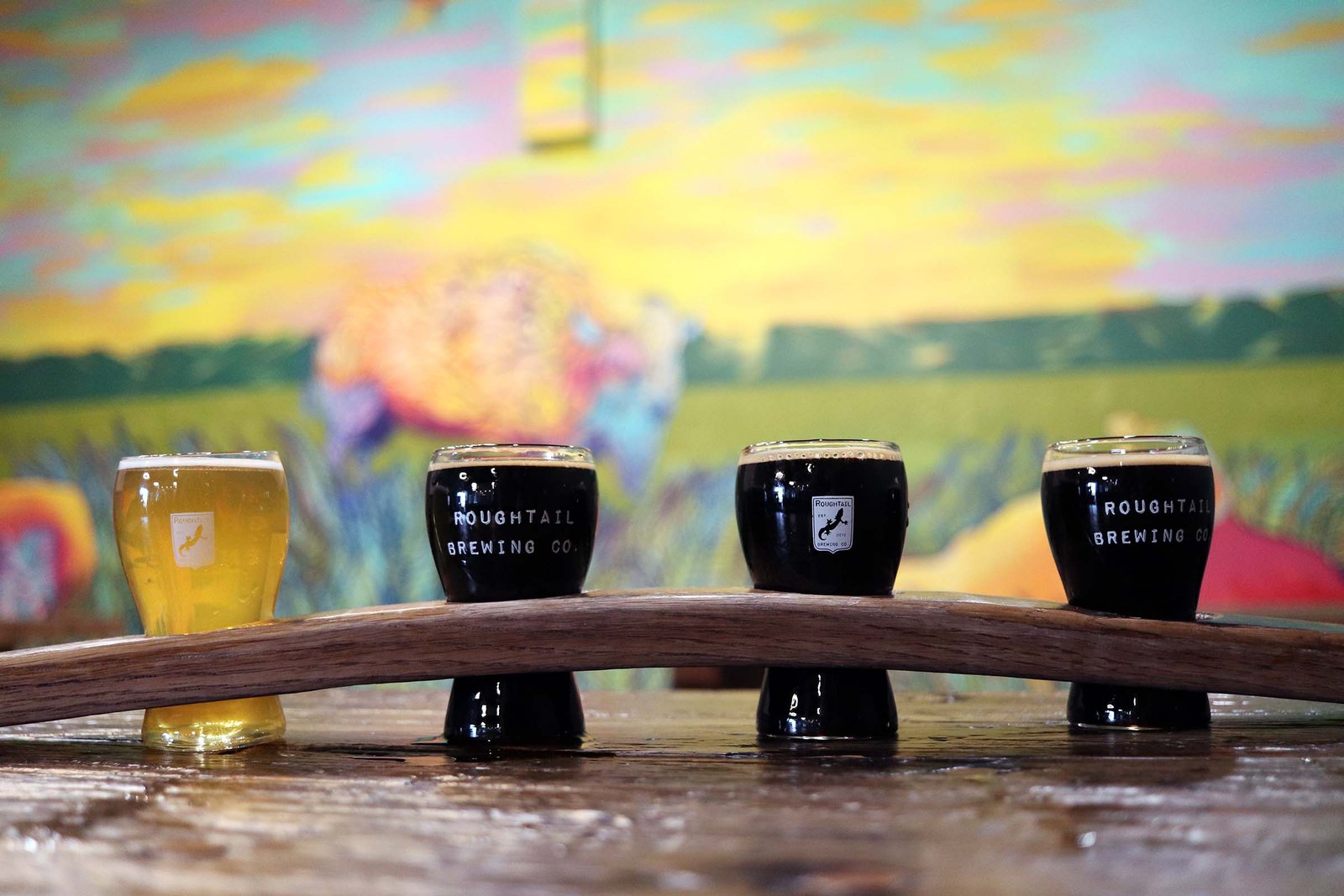Nonesuch
If any one thing defines the process of menu creation at nonesuch, it’s best summarized by executive chef Garrett Hare: “We’re not bound by any rules.”
For a chef with a creative impulse, this is at first glance the best news possible. No requirements for a beef dish or fish dish, no restrictions on ingredients, no dish too weird or too common, no style of wine nixed, no serving dish prohibited – it’s a creative free-for-all. As with one of those promises like “all your dreams will come true” that doesn’t take nightmares into account, unlimited freedom has its own Pandora effect. Imagine if in the course of preparing the story you’re reading the writer decided he wasn’t bound by the rules of grammar, spelling and syntax, and the other edge of the sword starts to come into focus.
Sometimes rules help to create order, and in the case of food, quality. It’s not that nonesuch has no rules; they just get to choose the rules that matter for their menus, so they’re free to ignore conventions that insist Oklahoma diners need items x,y, and z on the menu.
“A few years ago I watched a video about tasting menu restaurants,” Hare said, “and the chef said you need a few items that are familiar to diners, and then you have two or three that allow you to experiment.”
The nonesuch menu is both seasonal and weekly in terms of its cyclical evolution, which is to say the ingredients are chosen for their seasonality but dishes rotate on and off the menu during the season as well. There is a course template the chefs have followed from the early days: snacks, salad, palate cleanser, protein, custard, vegetable, protein or bread with protein, tea and snack, dessert, dessert. It’s not a normative rubric in any philosophy of restaurant service – and yes, that sort of thinking does exist – it’s more like a best practice to ensure the chaos of “no restrictions” is somewhat restrained.
Within that array of courses, the team of chefs and general manager Chad Luman, who is also tasked with wine pairings, decide how best to showcase their creativity, skill, experimental approach, and locally sourced ingredients, of which there are hundreds. The ingredient matrix is astounding compared to other more conventional restaurants, where a pizza joint might have 30 total ingredients in the kitchen, and an upscale casual restaurant 200 or so. The matrix at nonesuch might have 200 for a single season, and it’s likely more.
“We get young chefs in here, and they’ve never worked with any of these ingredients, so we aren’t just training them to cook the dishes; we have to train them to prep the ingredients,” Hare said.
Seasonality means quarterly menu planning, but it’s a broad-brush, not atomistic, approach. The availability of ingredients sourced from local farms, farmers markets, and specialty suppliers helps to reduce and refine the actual possibilities. As Hare puts it, they “plug and play” with different ingredients, and ideas are shared freely via text ahead of the regular Tuesday meeting where final menu decisions are made.
“We’re not changing the whole menu every week,” Hare said. “Sometimes one dish goes and we add a replacement, and sometimes it’s two, but we’re not making wholesale changes, so it evolves slowly. The goal is for guests to ‘eat the season’ as the season slowly changes.”
Alongside the chefs, Luman meets with a smaller subset of the back-of-house team that includes Hare to discuss wine pairings. He too is limited in his sourcing, preferring familiar varietals from smaller or emerging wine regions, as well as less common pairings like Tokaji or Sherry.
“We’re lucky because we have a lot of trust from our guests,” Luman said. “They come here for something different, and they’re open to try things. Like Chef Garrett, we take into account that not everyone will like everything.”
That isn’t a dismissive statement. They take customer input very seriously, but both acknowledge they won’t swap a pairing or take a dish off the menu because one customer hates it. Taste is always subjective, and tasting menu restaurants are designed with the adventurous eater in mind, and they more than suburban, weekly, middle American diners expect to encounter things they don’t like in the course of the tasting. That is at least part of the point: finding the edges of your culinary preferences.
One dish should serve as an example from the current (as of writing) menu: smoked beet granita infused with local Woodworks gin and served with a creme fraiche mousse, dill and spinach puree, and gelee made from beet juice with pickled elderberry liquid and pickled habanero. Luman calls it “the weirdest thing I ate this year.” At nonesuch, that is an observation, not a criticism, since “weird” means you’re still thinking about it, still unsure if you like it or not, and probably want to try it again just in case.
That’s partly a result of Hare still trying to find his own culinary voice, something he forthrightly admits, and then follow up by saying, “I love to make pasta,” and ingredient that only rarely appears at nonesuch. With so many ingredients, so many possibilities, and so many creative minds at work, something as simple as pasta won’t be able to assert itself often.
To give you an idea of what the chefs work through every week in terms of sourcing, we’ve added a sidebar with their supplier and examples of what they source from local suppliers.
First Published in Luxiere

















